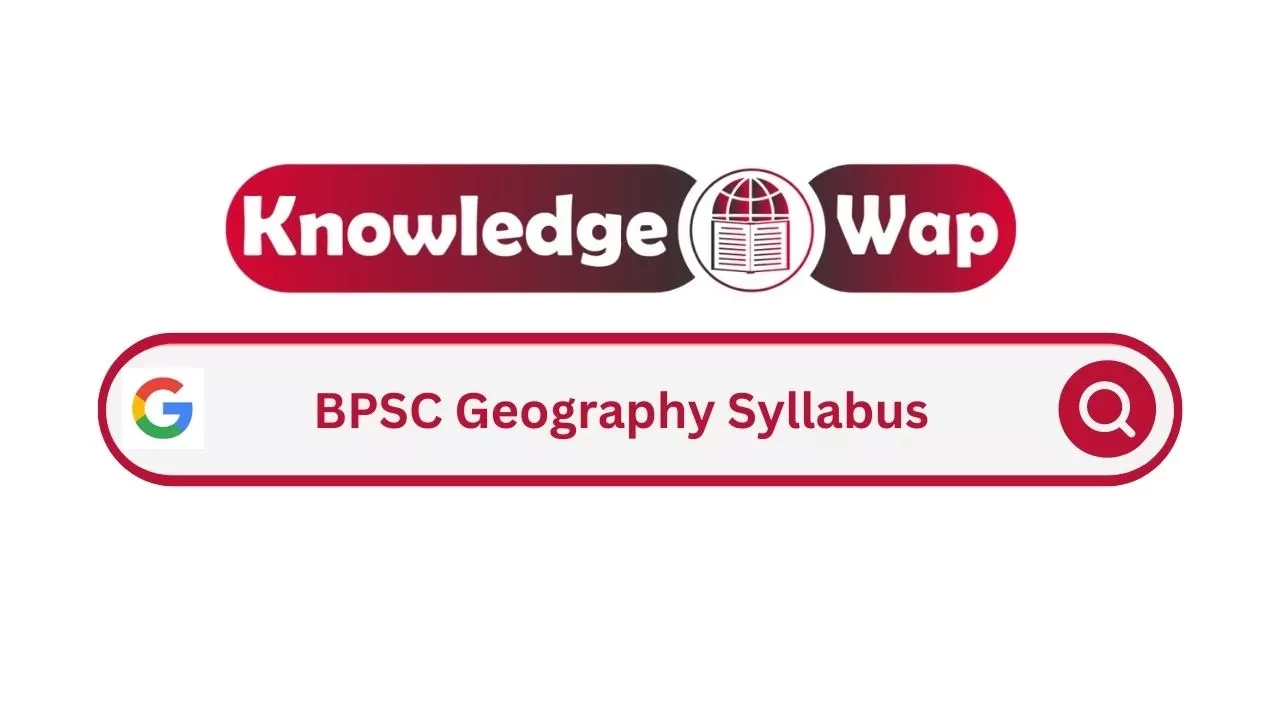
BPSC Geography Syllabus 2023

BPSC Geography Syllabus
|
| Paper | Topics |
|---|---|
| Paper I | |
| Geomorphology | Factors controlling landform development; endogenetic and exogenetic forces; Origin and evolution of the earth's crust; Fundamentals of geomagnetism; Physical conditions of the earth's interior; Geosynclines; Continental drift; Isostasy; Plate tectonics; Recent views on mountain building; Vulcanicity; Earthquakes and Tsunamis; Concepts of geomorphic cycles and landscape development; Morphology and drainage of river systems; Applications of geomorphology in mineral prospecting, civil engineering, hydrology and environmental studies. |
| Climatology | Temperature and pressure belts of the world; Heat budget of the earth; Atmospheric circulation; atmospheric stability and instability; Monsoons and jet streams; Air masses and fronts; Synoptic weather; Tropical cyclones and western disturbances; Climatic classification (Koppen and Thornthwaite); Global climatic change and role and response of man in climatic changes, Applied climatology and Urban climate. |
| Oceanography | Physical, chemical and biological features of the world's oceans; Temperature, salinity, and density of seawater; Ocean deposits; Waves, currents, tides, and oceanic circulation; Marine resources and their potential; Exclusive economic zone; Marine pollution and ecological management. |
| Biogeography | Genesis of soils; Classification and distribution of soils; Soil profile; Soil erosion, Degradation, and conservation; Factors influencing world distribution of plants and animals; Problems of deforestation and conservation measures; Social forestry; agro-forestry; Wildlife; Major gene pool conservation, Biosphere reserves, and National parks. |
| Environmental Geography | Principle and scope of environmental geography; Geographical approach to the study of environment; Physical and social environment, Population-pressure and resource utilization; Environmental degradation, management, and conservation; Biodiversity and sustainable development; Environmental policy; Environmental hazards and remedial measures. |
| Geography of India | Physical features, Climate, Soils, Natural vegetation, Wildlife, and their conservation; Human aspects: Population, Settlement, Migration, Regional Planning, and Development; Agriculture, Industries, and Trade; Transport, Communication, and Trade; Cultural setting: Festivals, Tourism, and Art forms. |
| Paper II | |
| Economic Geography | World economic development: Measurement and problems; World resources and their distribution; Energy crisis; the Limits to growth; World Agriculture: Types and patterns of agriculture; Agricultural efficiency and productivity; Food and nutrition problems; Food security; famine; Regional disparities in the world; the Concept of the Third World; Features, problems, and potentialities of the Indian economy; the Characteristic features of Indian agriculture, industry, and trade; Regional development and planning; India's foreign trade. |
| Population and Settlement Geography | Growth and distribution of world population; Demographic attributes; Causes and consequences of migration; Concepts of the over-under-and optimum population; Population theories, world population problems, and policies, Social well-being and quality of life; Population as a social asset or a liability; Settlements: Types, patterns, and morphology of rural and urban settlements; Urbanization, urban development and urban policy; Problems of urbanization, decentralization, and urban transport; Slums, squatter settlements, and urban poverty. |
| Regional Planning | Concept of a region; Types of regions and methods of regionalization; Growth centers and growth poles; Regional imbalances; Regional development strategies; environmental issues in regional planning; Planning for sustainable development. |
| Political Geography | State, sovereignty, and territoriality; Forms of government; Models of democracy and development; Determinants of electoral |
Related Post

